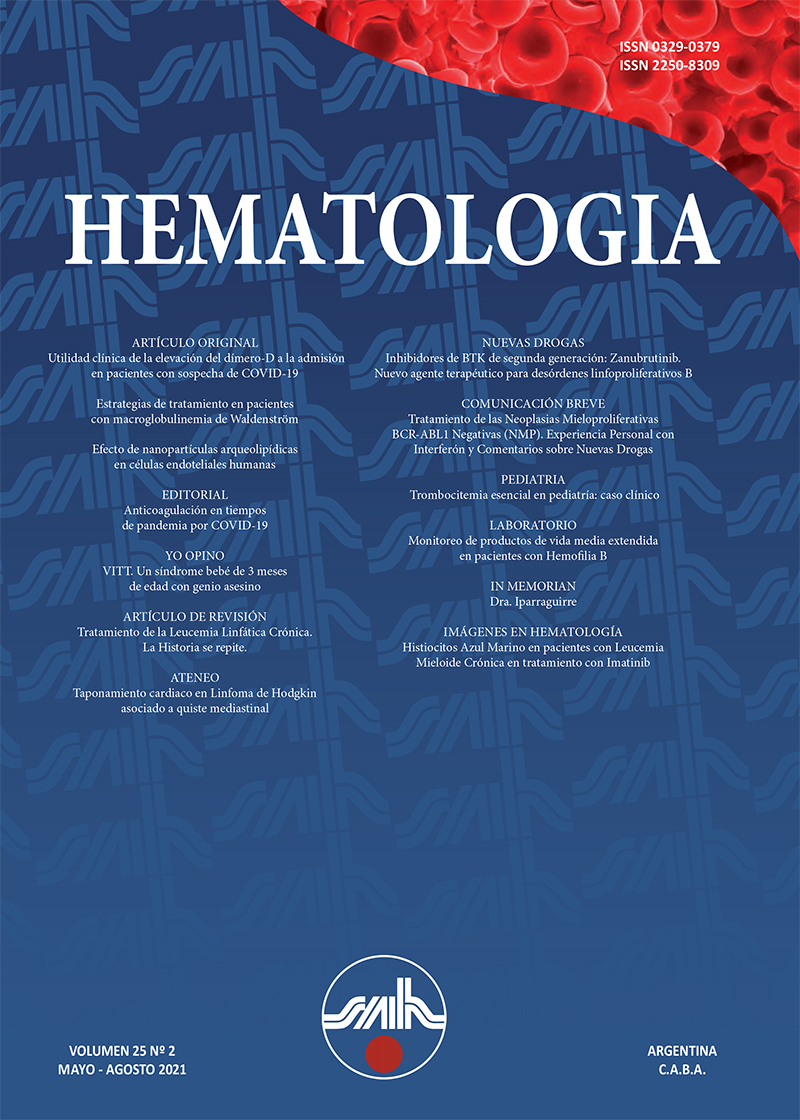Abstract
The same as liposomes, archaeosomes are nanoparticles (NPs), made of archaeolipids employed as drug delivery systems. Up to date, the effect of archaeosomes on the vascular endothelium, critical data for its admission to the clinic, remains largely unknown. In this study we analyzed the effect of new archaeosomes prepared from a hyperhalophilic strain from Patagonia Argentina on human umbilical vein endothelial cells (HUVECs) under physiological and inflammatory conditions and compare it with that of conventional liposomes. Although none of the NPs affected the viability and expression of ICAM-1 and E-selectin under basal conditions, the archaeosomes reduced the expression of both molecules and the secretion of IL-6 induced by LPS and Pam3CSK4, an effect not observed with TNF- α and associated with an inhibition in the activation of the NF-kB and ERK1/2 pathway. None of these parameters were modified by the liposomes. Similarly, only archaeosomes were endocytosed by HUVECs.
Our data reveal an important capacity of these archaeosomes to decrease endothelial activation and
suggest that loaded with anti-inflammatory drugs, they could magnify their activity on inflamed endothelium, their research in vasculopathies being of special interest.
References
2. Bozzuto G, Molinari A. Liposomes as nanomedical devices. Int J Nanomedicine. 2015;10:975–99.
3. Jose Morilla M, Mengual Gomez D, Cabral P y col. M Cells Prefer Archaeosomes: An In Vitro/In Vivo Snapshot Upon Oral Gavage in Rats. Curr Drug Deliv. 2012;8(3):320–9.
4. Kaur G, Garg T, Rath G, Goyal AK. Archaeosomes: an excellent carrier for drug and cell delivery. Drug Deliv [Internet]. 2016;23(7):2497–512. Available from: http://dx.doi.org/10.3109/10717544.2015.1019653
5. Benvegnu T, Lemiegre L, Cammas-Marion S. New Generation of Liposomes Called Archaeosomes Based on Natural or Synthetic Archaeal Lipids as Innovative Formulations for Drug Delivery. Recent Pat Drug Deliv Formul. 2009;3(3):206–20.
6. Moghimipour E, Kargar M, Handali S. Archaeosomes as means of nano-drug delivery. Rev Med Microbiol. 2014;25(2):40–5.
7. Michael A. GJ, Guillermo G-C. Endothelial cell dysfunction and the pathobiology of atherosclerosis. Circ Res. 2016;176(1):139–48.
8. Gonzalez RO, Higa LH, Cutrullis RA y col. Archaeosomes made of Halorubrum tebenquichense total polar lipids: A new source of adjuvancy. BMC Biotechnol. 2009;9:71.
9. Altube MJ, Selzer SM, De Farias MA, Portugal RV, Morilla MJ, Romero EL. Surviving nebulization-induced stress: Dexamethasone in pH-sensitive archaeosomes. Nanomedicine. 2016;11(16):2103–17.
10. Higa LH, Jerez HE, De Farias MA, Portugal RV, Romero EL, Morilla MJ. Ultra-small solid archaeolipid nanoparticles for active targeting to macrophages of the inflamed mucosa. Nanomedicine. 2017;12(10):1165–75.
11. Mena HA, Carestia A, Scotti L, Parborell F, Schattner M, Negrotto S. Extracellular histones reduce survival and angiogenic responses of late outgrowth progenitor and mature endothelial cells. J Thromb Haemost. 2016;14(2):397–410.
12. Joyce DE, Grinnell BW. Recombinant human activated protein C attenuates the inflammatory response in endothelium and monocytes by modulating nuclear factor-κB. Crit Care Med. 2002;30(5 SUPPL.).
13. Ben J, Zhu X, Zhang H, Chen Q. Class A1 scavenger receptors in cardiovascular diseases. Br J Pharmacol. 2015;172(23):5523–30.
14. Adachi H, Tsujimoto M, Arai H, Inouel K. Expression cloning of a novel scavenger receptor from human endothelial cells. J Biol Chem. 1997;272(50):31217–20.
15. Adachi H, Tsujimoto M. Characterization of the human gene encoding the scavenger receptor expressed by endothelial cell and its regulation by a novel transcription factor, endothelial zinc finger protein-2. J Biol Chem. 2002;277(27):24014–21.
16. Murshid A, Borges TJ, Lang BJ, Calderwood SK. The scavenger receptor SREC-I cooperates with toll-like receptors to trigger inflammatory innate immune responses. Front Immunol. 2016;7(JUN).
All material published in the journal HEMATOLOGÍA (electronic and print version) is transferred to the Argentinean Society of Hematology. In accordance with the copyright Act (Act 11 723), a copyright transfer form will be sent to the authors of approved works, which has to be signed by all the authors before its publication. Authors should keep a copy of the original since the journal is not responsible for damages or losses of the material that was submitted. Authors should send an electronic version to the email: revista@sah.org.ar

